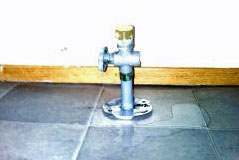shove insulation aside, place Pex, and shove insulation back. Cover the line with plastic sheeting (any kind) 3' or 4' wide, to trap air more "there, where the plumbing is," and also to identify where the Pex line is, so it is less likely to get squashed when someone steps around there one day in the far future.
that is only one suggestion. As mentioned above, it depends on your local climate, and it depends on what that insulation is, too.
Trapping air is what insulation is all about. In little compartments, thin layers, small bubbles. To keep air still. Even little bubbles in bubblewrap have air movement in them, and the movement transfers warm molecules to the upper wall which then trnasfers heat upwards in a progression that nothing can stop. Heat always migrates, in every direction, and heat in air moves upwards too. The worst performance is from uncovered "fiberglass" batts; air moves through them as easily as it moves through a furnace filter. They only desrve their R rating in a tightly controlled laboratory setting. A real attic has more moisture and more air movement than any lab test which was designed by the way by the fiberglas manufacturer



and then used to show how fast a single degree of temperature change occurs when material X is used, in a windless and dry box with an insulated partition in the middle. The results would be worse for fiberglass if the partition were positioned like a floor or ceiling, horizontally. And even worse again if wind or moisture were introduced. Ask you attic if air can move around in it, or if humidity is high.
The only other key component of insulation is radiation reflection, radiant barrier. This is less critical when the temperature differences are only a few degrees, and more critical when the temp differences in question are huge amounts, like when the sun's direct rays touch something or send heat through something - like your roof. A radiant barrier adds airtightness too, if you seal the panel seams, tape the aluminum coated bubblewrap sheets together, etc.
You will notice a difference in terms of comfort (sensation of warmth as opposed to feeling cold walls or cold structure) and in the lower cost of heating. How much depends again on the building (how it was originally built ) and on your climate including wind not just temperature or humidity.
Do you need to do this? Partially? Totally? You don't need to do this "because it's Pex." You need to
do something, depending on your particular case, because you are running cold water through a pipe - any pipe, copper or Pex - in a cold attic, in a climate that freezes, -- you get the picture. It all depends.
I'd at least trap air around the Pex, in the vicinity of the Pex, and obviously that means on top of the Pex with a lot of insulation above the Pex, new or old insulation. It wouldn't sound reasonable to me, to lay the Pex on top of the existing insulation. Never heard of attic insulation that couldn't be moved and put back. You can also toss down new insulation on top of it all too, and unroll a sheet of plastic over that, in very little time. Chances are, there is not a lot of insulation there. Overall, spending money on attic insulation is not a big priority when houses get built.
David

